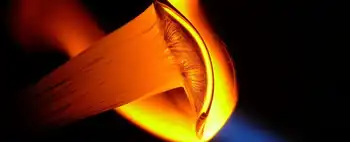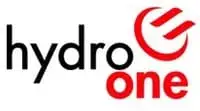Ontario Blackout Day results are in
By Exchange Morning Post
Protective Relay Training - Basic
Our customized live online or in‑person group training can be delivered to your staff at your location.

- Live Online
- 12 hours Instructor-led
- Group Training Available
The combined reduction from this 2008 challenge is the equivalent of removing 27,000 homes from the grid that day, or to removing a city the size of Orillia from the grid.
It has taken weeks to compare results and a number of factors have been considered that create a common, level field. In order to estimate electricity savings, the Independent Electricity System Operator (IESO) compared the results from August 14th to other weekdays with similar weather. Data was limited to more recent observations in order to minimize the impact of local economic and demographic changes. Why?
Arriving at the conservation impact for the consumption data is complicated by many factors. Straight this year to last year comparisons are not an accurate reflection of demand reductions. Changes in weather, levels of economic activity and population growth can affect consumption province wide.
On the local level, new stores, factory shutdowns, embedded generation and local system outages can all impact the estimation of conservation savings. Conservation efforts are changing but trying to measure them is difficult when the other factors that drive consumption are changing as well. Hence, dwelling on the reductions alone are not the only factor to consider. In general since 2005, industry sources say that overall energy demand has been decreasing.
Since the afternoon high for August 14th was 23.4 C and the humidex was only 26.8 C (at Pearson Airport for example), the opportunity for savings was reduced. At those temperatures and humidity levels the amount of air conditioning that would be running would be greatly reduced thereby reducing the amount of potential savings. A nice hot day of 30 C and humidex of 38 C would lead to higher A/C loads and greater potential savings.
Not every participant could have their energy use measured and compared. IESO was unable to collect data for 13 participants but that doesnÂ’t mean they are not involved in conservation efforts. These communities are not directly served by delivery points from the IESO-controlled grid. This can be due to a variety of reasons, that they share a delivery point with other utilities, they are served by multiply utilities or that they are embedded within another utility.
As you will notice most of the 13 are more rural areas which tend to be difficult to obtain data on.
Unfortunately in the case of Brockton, transformer station data was used that was also providing load to other customers beside Brockton. Consequently, we do not have actual measures in terms of hourly profile or kWh for Brockton.
However, the percentage figure is provided and, given data limitations, applies to both energy and peak but during a different set of hours (7 a.m. to 9 p.m.). More involvement with Hydro One is clearly indicated in the future.
On strictly percentage terms, the Town of Aylmer hit the highest percentage on both energy saved and peak demand. But thatÂ’s not where the story ends.
Small percentage reductions in large communities contribute the most to overall energy reductions.
The City of Hamilton contributed the most savings over all as the chart above indicates. Add to that the leadership they show in separately monitoring their municipal assets, something other communities are starting to do. In the future and where possible, this may be broken out from the stats. A 25% reduction in overall energy use for municipal assets is an extraordinary result.
While the overall provincial reduction is 0.2% - peak (38 MW) and energy (657 MWh) for August 14th, it is the equivalent of removing 27,000 homes from the grid that day.
Smart and Interval meters are key to the continued improvement of measuring conservation results, be it for a single day or any other day in the year.
We have a real opportunity to combine conservation awareness right down to the individual residential user, by leveraging the new Smart meter paradigm now under way. By empowering each individual consumer to monitor and measure their own consumption, customers can measure the impact of their own conservation initiatives.











